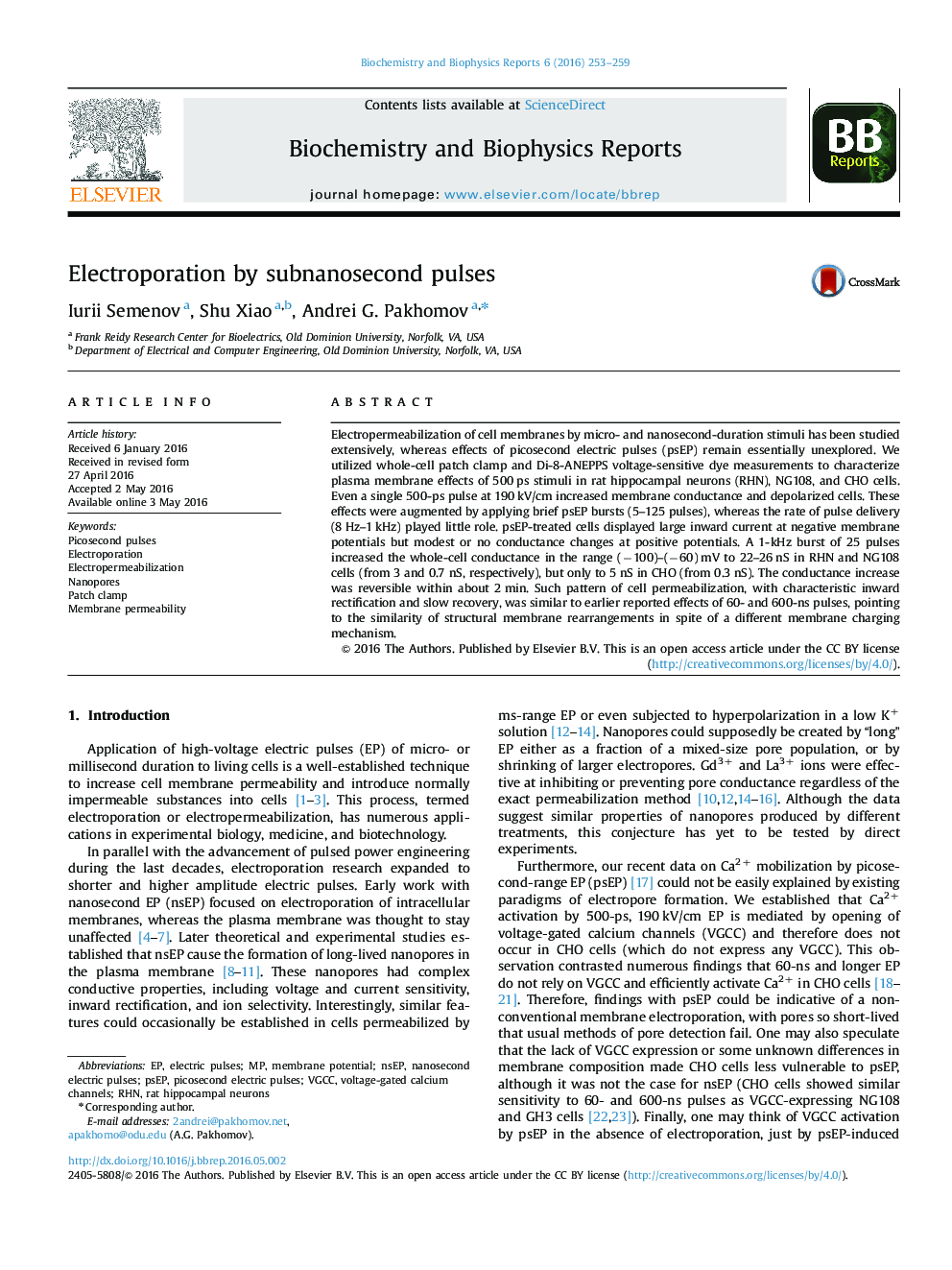| Article ID | Journal | Published Year | Pages | File Type |
|---|---|---|---|---|
| 1941688 | Biochemistry and Biophysics Reports | 2016 | 7 Pages |
•500-ps pulses at 190 kV/cm electroporate mammalian cells.•Cells lose membrane potential and increase conductance at negative potentials.•Permeabilization is enhanced by increasing pulse number but not the rate.•Membrane resealing takes minutes.
Electropermeabilization of cell membranes by micro- and nanosecond-duration stimuli has been studied extensively, whereas effects of picosecond electric pulses (psEP) remain essentially unexplored. We utilized whole-cell patch clamp and Di-8-ANEPPS voltage-sensitive dye measurements to characterize plasma membrane effects of 500 ps stimuli in rat hippocampal neurons (RHN), NG108, and CHO cells. Even a single 500-ps pulse at 190 kV/cm increased membrane conductance and depolarized cells. These effects were augmented by applying brief psEP bursts (5–125 pulses), whereas the rate of pulse delivery (8 Hz–1 kHz) played little role. psEP-treated cells displayed large inward current at negative membrane potentials but modest or no conductance changes at positive potentials. A 1-kHz burst of 25 pulses increased the whole-cell conductance in the range (−100)–(−60) mV to 22–26 nS in RHN and NG108 cells (from 3 and 0.7 nS, respectively), but only to 5 nS in CHO (from 0.3 nS). The conductance increase was reversible within about 2 min. Such pattern of cell permeabilization, with characteristic inward rectification and slow recovery, was similar to earlier reported effects of 60- and 600-ns pulses, pointing to the similarity of structural membrane rearrangements in spite of a different membrane charging mechanism.
